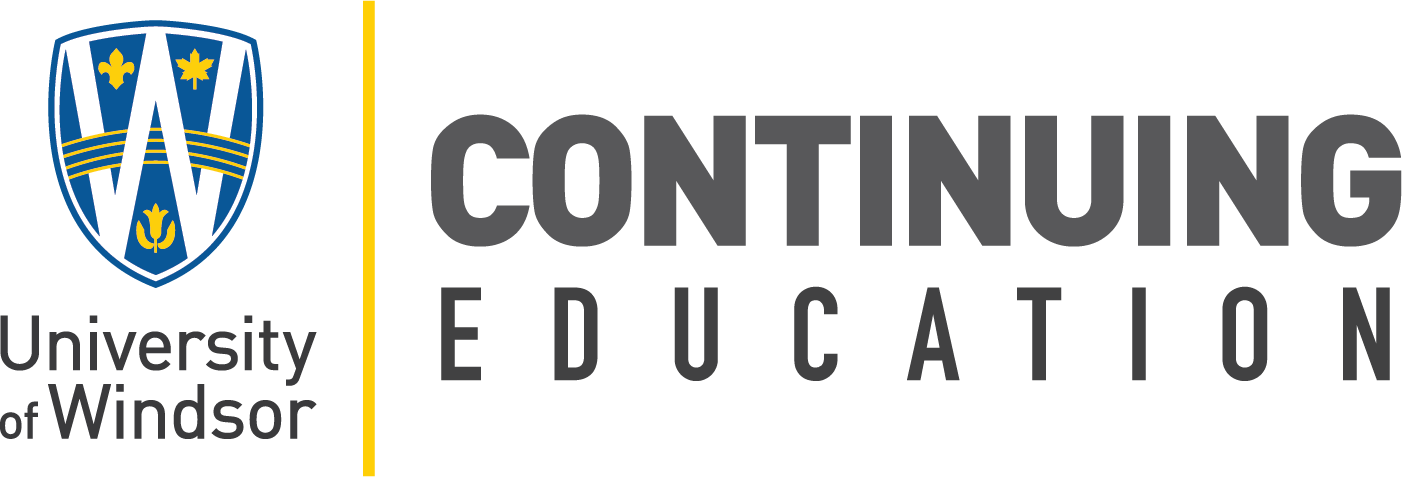|
Format |
Length |
Professional Certification |
In collaboration with Siemens, the University of Windsor is thrilled to offer a world-class industry certification in mechatronic systems.
Siemens, one of the world’s largest high-tech manufacturing corporations, is a leader in complex technologies, particularly in complex systems integrating electrical, mechanical and computer engineering. The marriage of these three engineering fields, better known as mechatronic systems, plays an ever-increasing role in modern technology. As a result, there is a high demand for qualified and motivated personnel.
For this reason, the Siemens Technik Akademie Berlin has developed a comprehensive industry skill certification, the Siemens Mechatronic Systems Certification Program (SMSCP), now offered at the University of Windsor.



SMSCP technical content focuses on key industrial skill areas such as electrical components, sensors, motor controls, PLCs, as well as hydraulics and pneumatics. In addition to teaching the technical knowledge, SMSCP content also stresses trouble-shooting and system-based technical thinking via hands-on training. This technical training, paired with our certifications, creates well-grounded workers that can easily meet the challenges of high-tech and advanced manufacturing industries. In collaboration with Siemens, the University of Windsor proudly offers the SMCP to provide your knowledgeable workers with hands-on mechatronics systems training to meet your industry goals including:
Well-trained, work-ready technical workers. With its emphasis on in-demand industrial skills, troubleshooting, and hands-on practice, SMSCP’s training will provide you with knowledgeable workers, who are able to easily move into a variety of production, technician, and/or engineering roles.
Objective certification of workers’ technical skills. SMSCP certifications provide an objective, industry-aligned assessment of mechanical, electrical, and digital technical skills, troubleshooting, and mechatronic systems thinking.
Cost savings on training and education. With SMSCP, companies and industries can receive much-needed skilled technical workers while drawing on local education and training resources via partner schools. UWindsor offers SMSCP training at a fraction of the cost of private training companies and in some areas, the training may qualify for supporting funding from local government.
Clear Job Profiles. To demonstrate its relationship to industry needs, the SMSCP is divided into three qualification levels which each correspond to specific “job profiles”. The job profiles clearly define the certified qualification and skills of the graduates. The three levels are:
Level 1: Siemens Certified Mechatronic Systems Assistant. Emphasis is placed on efficiently operating complex mechatronic systems, troubleshooting and foreseeing problems.
Level 2: Siemens Certified Mechatronic Systems Associate. Focused on systems management, investigation, repair and troubleshooting.
Level 3: Siemens Certified Mechatronic Systems Professional. Corresponding to university-level engineering education. In this level, emphasis is placed on systems design and process optimization.
SMSCP technical content focuses on key industrial skill areas such as electrical components, sensors, motor controls, PLCs, as well as hydraulics and pneumatics. In addition to teaching the technical knowledge, SMSCP content also stresses trouble-shooting and system-based technical thinking via hands-on training. This technical training, paired with our certifications, creates well-grounded workers that can easily meet the challenges of high-tech and advanced manufacturing industries. With the defined, industry-focused job profiles, SMSCP can help you transition into a variety of production, technician, and engineering jobs in high-tech and advanced manufacturing industries around the world. SMSCP certifications are internationally recognized as world-class technical qualifications. As you graduate and move on to compete in the job market, your Siemens certification will give you a clear advantage over the competition.
The SMSCP is offered in three levels:
Level 1: Siemens Certified Mechatronic Systems Assistant. Emphasis is placed on efficiently operating complex mechatronic systems, troubleshooting and foreseeing problems.
Level 2: Siemens Certified Mechatronic Systems Associate. Focused on systems management, investigation, repair and troubleshooting.
Level 3: Siemens Certified Mechatronic Systems Professional. Corresponding to university-level engineering education. In this level, emphasis is placed on systems design and process optimization.
Curriculum
Students should complete the Siemens Mechatronic Systems Certification Program to prepare for the SMSCP certification exam managed by the Siemens Technik Akademie. The following are compulsory courses that are combined into this one non-credit course offering:
Course Description
This course covers the basics of pneumatic, electro pneumatic and hydraulic control circuits in a complex mechatronic system. Students will learn the functions and properties of control elements based upon physical principles, and the roles they play within the system. Technical documentation such as data sheets, circuit diagrams, displacement step diagrams and function charts will also be covered. By understanding and performing measurements on the pneumatic and hydraulic control circuits, students will learn and apply troubleshooting strategies to identify, localize and (where possible) to correct malfunctions. Preventive maintenance of (electro) pneumatic and hydraulic components as well as safety issues within the system will be discussed.
Course Goals
Upon completion of the course, students should:
- Understand what a mechatronic system is, and the inter-relationships of components and modules within a complex mechatronic system with a focus on (electro) pneumatic and hydraulic control systems.
- Understand the role of (electro) pneumatic and hydraulic control systems in complex mechatronic system and subsystems.
- Understand troubleshooting, maintenance and safety issues revolving around (electro) pneumatic and hydraulic circuits within a mechatronic system.
Course Objectives
At the conclusion of this course, students will be able to:
- Explain the role of various (electro) pneumatic and hydraulic components within a given system or module.
- Trace and describe the flow of energy in a given mechatronic system or subsystem.
- Describe the basic physical properties of pneumatic and hydraulic components.
- Carry out measurements and adjustments on pneumatic and hydraulic components in a mechatronic system.
- Read, analyze and utilize the technical documents such as data sheets, circuit diagrams, displacement step diagrams, timing diagrams and function charts for the pneumatic and hydraulic components within a mechatronic system.
- Correctly localize, identify and document causes of malfunctions in pneumatic and hydraulic circuits, based upon the technical documentation.
- Correct malfunctions in pneumatic and hydraulic circuits, where possible, or correctly identify the expertise required to correct a malfunction.
- Apply safety rules while working on the system.
- Transfer the knowledge learned from one system to another system.
Course Description
This course covers the fundamentals of digital logic and an introduction to programmable logic controllers (PLCs) in a complex mechatronic system with a focus on the automation system SIMATIC S7-1200 and the appropriate programming software STEP7. Using computer simulation, students will learn the role PLCs play within a mechatronic system or subsystem. They will also learn basic elements of PLC functions by writing small programs and testing these programs on an actual system. Students will learn to identify malfunctioning PLCs, as well as to apply troubleshooting strategies to identify and localize problems caused by PLC hardware.
Course Goals
Upon completion of the course, students should:
- Understand the role of programmable logic controllers in complex mechatronic systems, modules and subsystems.
- Understand the flow of information in the system.
- Understand and apply troubleshooting, maintenance and safety rules.
Course Objectives
At the conclusion of this course, students will be able to:
- Explain the role of programmable logic controllers within a given system or module.
- Trace and describe the flow of information in a given mechatronic system or subsystem with a focus on the control function of PLCs in the system.
- Describe the basic functions of PLCs.
- Read, analyze and utilize the technical documents such as data sheets, timing diagrams, operation manuals, schematics.
- Correctly localize, identify and document system malfunctions in or caused by PLC hardware, based upon the technical documentation.
- Apply safety rules while working on the system.
- Transfer the knowledge learned from one system to another system.
Course Description
This course covers the basics of electrical components in a complex mechatronic system. Based upon a physical system, students will learn the basic functions and physical properties of electrical components, and the roles they play within the system. Technical documentation such as data sheets, schematics, timing diagrams and system specifications will also be covered. By understanding the complete system, the flow of energy through it and measurements on the components, students will learn and apply troubleshooting strategies to identify, localize and (where possible) correct malfunctions. Preventive maintenance and safety issues for electrical components within the system will be discussed.
Course Goals
Upon completion of the course, students should:
- Understand what a mechatronic system is, and the inter-relationships of components and modules with a system.
- Understand the flow of energy, mass and information in the system.
- Understand the role of electrical components in complex mechatronic system and subsystems.
- Understand troubleshooting, maintenance and safety issues within a mechatronic system.
Course Objectives
At the conclusion of this course, students will be able to:
- Describe what comprises a mechatronic system or module.
- · Explain the role of various electrical components within a given system or module.
- Trace and describe the flow of energy in a given mechatronic system or subsystem.
- · Describe the basic physical properties of electrical components.
- Read, analyze and utilize the technical documents such as data sheets, timing diagrams, operation manuals, schematics, etc. for a mechatronic system.
- Carry out measurements on electrical components in a mechatronic system.
- Correctly localize, identify and document causes of malfunctions in electrical components, based upon the technical documentation.
- Where possible correct malfunctions, or correctly identify the expertise required to correct a malfunction.
- Apply safety rules while working on the system.
- Transfer the knowledge learned from one system to another system.
Course Content
Content to be covered within this course includes the following topics:
- Basic elements and quantities
- Circuit diagrams, data sheets, schematics
- Measurements
- Energy sources
- Relays and Contactors
- Input and Output Devices (Switches and Indicators)
- Solenoids
- Fuses and Circuit Breakers (Overcurrent protection)
- Reed Contacts
- Photoelectric Sensors
- Inductive Sensors
- Capacitive Sensors
- Safety issues, including local regulations
- Preventive and routine maintenance of components
- Troubleshooting of the electrical components within a module or system
Course Description
This course covers the basics of mechanical components and electrical drives in a complex mechatronic system. Based upon a physical system, students will learn the basic functions and physical properties of mechanical components as well as electrical drives (AC and DC), and the roles they play within the system. They will also learn about mechanical components which lead and support the energy through a mechanical system to increase efficiency and to reduce wear and tear. Materials, lubrication requirements and surface properties will be examined. Technical documentation such as data sheets and specifications of mechanical elements and electrical drives will also be covered. By understanding the interworkings of the complete system, students will learn and apply troubleshooting strategies to identify, localize and (where possible) to correct malfunctions. Preventive maintenance of mechanical elements and electrical drives as well as safety issues within the system will be discussed.
Course Goals
Upon completion of the course, students should:
- Understand the role of mechanical components and electrical drives in complex mechatronic systems, modules and subsystems.
- Understand the flow of energy in the system.
- Understand troubleshooting, preventive maintenance and safety issues revolving around mechanical components and electrical drives within a mechatronic system.
Course Objectives
At the conclusion of this course, students will be able to:
- Explain the role of various mechanical components within a given system or module.
- Trace and describe the flow of energy in a given mechatronic system or subsystem.
- Describe the basic physical properties of mechanical components including materials, lubrication requirements and surface properties.
- Carry out adjustments on mechanical components in a mechatronic system.
- Read, analyze and utilize the technical data sheets for the mechanical components and electrical drives within a mechatronic system.
- Correctly localize, identify and document causes of malfunctions in mechanical components or electrical drives, based upon the technical documentation.
- Correct malfunctions where possible, or correctly identify the expertise required to correct a malfunction.
- Apply safety rules while working on the system.
- Transfer the knowledge learned from one system to another system.
Hear From Our Students
Both doctors and the teaching assistant were excellent. Enjoyed learning from them, and they did an excellent job teaching the course content through technical assignments and labs. And on top of this all they were able to teach us the fundamentals of robotics and a little bit of motion control. Exceptional course due to involved and helpful professors.
This course helped me understand how passionate I am about industrial technology and I will be continuing to harness this passion however I can.
I couldn't have asked for a better introduction to mechatronic systems than the SMSCP program here at the University of Windsor. I waited for approximately 2 years in order to take this program, and the pandemic didn't make the wait much better. The instructor team has done a really good job of expanding our thoughts and overall insight when it comes to mechatronic systems and control. I feel very much equipped with the right resources and knowledge to take on industry challenges going forward. Thanks to the SMSCP team, classmates, and the continuing education team for making this experience worthwhile and inspiring.
- Individuals looking to learning about Siemens Mechatronic systems.
- Professionals looking to gain a certification in Siemens Mechatronic Systems for on-the-job knowledge on PLC use and troubleshooting.
Upcoming Course Schedule
No upcoming course sections available. Please join our interest list.
Location: University of Windsor CEI building, Room 1189
Format
In-Person Learning
- 11-week program consisting of four courses
- Total course hours: 180 hours
- In addition to class time, open lab times may be available outside of class time. Details will be provided on the first day of class.
Please note that the exam dates and times are subject to change.
Credential
Upon successful completion of the four courses, students will receive a Certificate of Completion in Mechatronic Systems from the University of Windsor Continuing Education and may elect to complete the exam for Siemens Certification.
Candidates who successfully complete the SMSC Level 1 coursework will be eligible to write the SMSC Level 1 Exam on the date listed above.
*Exam Fee (plus applicable taxes) is not included in course registration and exam date is subject to change.
Prerequisites
Minimum admission requirements include successful completion of a secondary school diploma and English language proficiency. Verification may be requested.
Technical Requirements
This class is offered online through Brightspace and Microsoft Teams. Learners will require access to a computer with high-speed internet access.
Learning Management System Requirements
All course details can be accessed through Brightspace. A link will be provided through email to Brightspace and Microsoft Teams and you will have access the first day of class.
Please activate your UWinID. Your UWinID and password are needed to access Brightspace and Microsoft Teams. If you have any issues, please contact continue@uwindsor.ca.
Program Fees
Program Fee: $2,565 (does not include exam fee for Siemens certification or Key Fob deposit)
Additional Exam Fee (optional): $250 + HST
Key Fob Deposit (required): $50
A Key Fob is required to access the building and classroom. The Key Fob deposit fee of $50 is not included in the course registration. The $50 deposit is fully refunded at the end of the course when the key fob is returned.
Full refund 7 days before the start of the course, minus a $25.00 administration fee. Please review the Registration and Refund Policies.
Discounts
No discounts available.
Financial Aid + Funding
Grants
Interested in sending a member from your organization?
You may be eligible for the Canada-Ontario Job Grant as a way to offset the cost.
OSAP-MC
- This program is eligible for the OSAP Micro-credential application (OSAPMC).
- Participants must be registered into the program prior to applying for OSAPMC.
- Participants are obligated to pay their fees in full, or decide to withdraw at least one week prior to the course start date should they not receive OSAPMC.
- If this is the case, email continue@uwindsor.ca immediately to withdraw and request a refund.
- Register for this program accordingly to allow ample time for your application to be processed. It takes approximately 10-15 business days for the OSAPMC application to be processed.
For more information, please visit our OSAP-MC website, or email our financial aid office.
Other Financial Aid
Continuing Education has partnered with Windmill Microlending to make your learning opportunities more accessible. Windmill Microlending is a registered charity serving newcomers since 2005. Windmill Microlending provides loans of up to $15,000 for skilled immigrants and refugees to pay for their Canadian licensing or training needed to restart or continue their careers in Canada. Loans can be used to cover fees for licensing and qualifying exams, credential assessments, books, course materials, living allowance during the study period, and language courses. To find out if you are eligible for a Windmill loan, please click here.
Please apply 2-3 weeks before the start of your desired program.
For more information, please contact Andrea D’Souza at inquiry@teamwindmill.org
Coming soon.
Instructors
Dr. Shahpour Alirezaee
Watch an extended recording! Dr. Shahpour Alirezaee discusses the benefits of the Siemens Mechantronic Systems Certification Program Level 1
Other Learning Opportunities
Email us at continue@uwindsor.ca if you have questions - we are always happy to help.
Sign up on our Interest List to be notified about enrolment and receive updates from Continuing Education.







